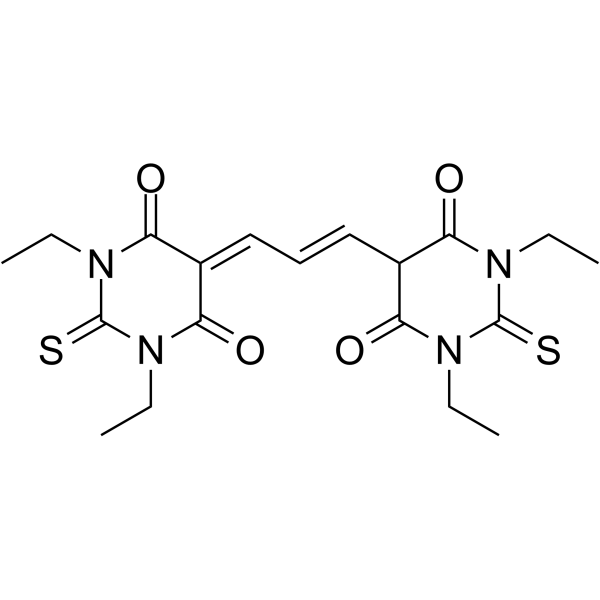A membrane potential-sensitive dye for vascular smooth muscle cells assays.
Fabiana S Sguilla, Antonio C Tedesco, Lusiane M Bendhack
Index: Biochem. Biophys. Res. Commun. 301(1) , 113-8, (2003)
Full Text: HTML
Abstract
Changes in membrane potential of rat aorta smooth muscle cells were investigated using the bis-oxonol sensitive probe DIBAC2(3). We compared the changes in membrane potential induced by a high external KCl concentration in aorta smooth muscle cells from normotensive 2 kidney (2K) and from renal hypertensive 2 kidney-1 clip (2K-1C) rats. The spectral properties of the membrane potential were first characterized in aqueous buffers and in cultured smooth muscle cells from 2K and 2K-1C rat aortas. Fluorescence emission and the images were recorded using a laser scanning confocal microscope. The relationship between fluorescence intensity (FI) and membrane potential (psi(m)) as a function of the increasing extracellular KCl concentration was linear in the 5-40 mmol/L KCl range in both 2K and 2K-1C rat aorta cells. Cell membranes from 2K-1C rat aorta cells were more depolarized (-55 mV) than 2K rat aorta cells (-65 mV). The results show that in 2K-1C aorta cells only 10 mmol/L KCl was needed to induce complete membrane depolarization while in 2K cells 40 mmol/L KCl was needed to induce a similar effect. This study clearly shows that the method is suitable to measure the membrane potential in cultured smooth muscle cells.
Related Compounds
| Structure | Name/CAS No. | Molecular Formula | Articles |
|---|---|---|---|
 |
Bis-(1,3-diethylthiobarbituric acid)trimethine oxonol
CAS:47623-98-3 |
C19H24N4O4S2 |
|
Membrane potential changes visualized in complete growth med...
1997-03-15 [Exp. Cell Res. 231(2) , 260-8, (1997)] |
|
Peroxynitrite affects Ca2+ influx through voltage-dependent ...
2001-01-01 [J. Neurochem. 76(2) , 341-50, (2001)] |
|
Simultaneous mechanical stiffness and electrical potential m...
2009-04-29 [Nanotechnology 20(17) , 175104, (2009)] |
|
Measurement of membrane potential of endothelial cells in si...
1995-09-01 [Microvasc. Res. 50(2) , 183-98, (1995)] |
|
Discrimination between cystic fibrosis and CFTR-corrected ep...
2002-01-01 [Exp. Lung Res. 28(3) , 181-99, (2002)] |